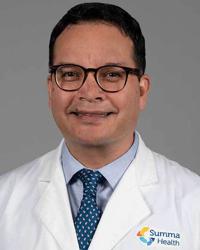Torn Rotator Cuff? Try These 4 Non-Surgical Treatments That Really Work
Posted July 17, 2023 by Jose Armendariz, M.D.

Do you feel a dull ache deep in your shoulder that worsens at night or with particular arm movements? Do you have weakness when lifting or rotating your arm above your head? If you answered yes to either of these questions, you might be dealing with a torn rotator cuff.
The rotator cuff is a series of muscles and tendons that keeps the shoulder joint stable, while allowing the arm to rotate. Rotator cuff injuries are very common and increase with age. Injury, degeneration or repetitive overhead activities, such as painting, throwing a ball, swimming or swinging a racket, can lead to inflammation or tears in the rotator cuff tendons.
If you’re suffering from a torn rotator cuff, you can breathe a sigh of relief because surgery isn’t always the best option. There are a wide range of non-surgical treatments available that effectively treat muscle pain, joint pain and lack of mobility.
Your orthopedic specialist will likely perform a comprehensive evaluation and recommend a treatment plan based on your diagnosis, injury type, medical history and pain. While a rotator cuff tear does not heal on its own, the goal of treatment is full symptom relief.
Summa Health highlights four non-surgical initial treatments, for a painful shoulder involving a rotator cuff tear, to help resolve pain and swelling and quickly get you back to your favorite daily activities. In many cases, your physician may recommend more than one treatment option.
Rest and activity modification
In many cases, resting your shoulder is the best medicine to allow swelling and other symptoms to subside. Inflammation in the soft tissues surrounding the rotator cuff can cause pain and discomfort.
Many providers recommend alternating between heat and ice therapy to relieve these symptoms. Applying heat helps loosen tight muscles and joints to relieve pain. Icing the affected area is best for reducing swelling and joint stiffness.
Your provider also will recommend adjusting how you lift or carry items, reach overhead and even sleep at night to reduce stress on your shoulder. For severe tears, using an arm sling to rest and take pressure off the shoulder joint may be necessary to relieve discomfort and promote healing.
Anti-inflammatory medications
Different oral medicines can be used to decrease your pain and swelling. They can include non-steroidal anti-inflammatory drugs (NSAIDs), such as aspirin and ibuprofen. Topical pain-relieving creams can also be used for temporary symptom relief.
If your pain is severe and inhibiting daily function, prescription pain relievers may be necessary.
Injection treatments
Corticosteroids can be used to reduce swelling, pain, stiffness, and enable range of motion. They can be used around the tendons for inflammation or directly into the shoulder joint and may take a week to ten days to provide relief. However, it’s not a long-term solution because steroids can weaken the tendons in your shoulder.
Orthobiologics are a part of regenerative medicine that uses your own body to help treat an area of inflammation, pain or injury. Common types of injections include platelet rich plasma (PRP) injections or bone marrow aspirate concentrate injections (BMAC). Patient questions regarding these newer treatments is done by our fellowship trained sports medicine providers.
Physical and occupational therapy
Physical therapists use specific and targeted exercises to restore strength, flexibility and range of motion in the shoulder, arm and back muscles. They can create a personalized exercise plan to alleviate symptoms and reduce your risk of further tearing the rotator cuff.
In addition, occupational therapists can offer slight modifications to your daily routine to help alleviate pain and reduce stress on your shoulder joint. Simple daily functions, such as lifting your arm to wash your hair or get dressed, can cause more pain and swelling if you’re not careful.
Fortunately, you can start many of these non-surgical treatments right away, and some can provide quick relief. However, if you’re continuing to experience pain and swelling after trying these treatments, surgery may be necessary to get you back to full daily function.
About the Author
Vitality eNews Sign Up
Receive the Summa Health eNewsletter for the latest health tips, advice and updates.


